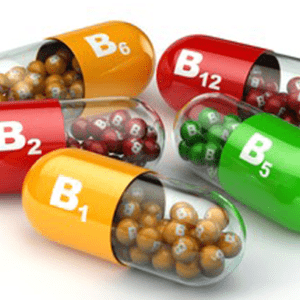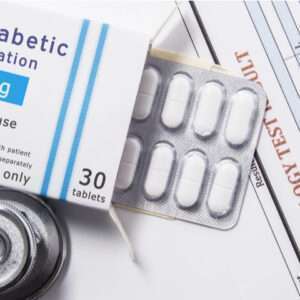Description
Why Insulin is Important for Your Health
Insulin is a hormone that controls the level of sugar in your blood. It helps cells turn sugar into energy, and it also helps muscles recover after exercise. When we eat carbohydrates, insulin usually enters our bloodstream simultaneously as glucose (sugar). Insulin’s job is to help us use this new energy source by taking it into muscle cells and other tissues for storage or conversion to fat. But if there isn’t enough insulin around – such as when someone has type 1 diabetes – those carbs can’t be used for anything but fat production. If you have type 2 diabetes, either because your body doesn’t produce enough insulin or because its insulin response is impaired or both, then too much glucose builds up in you blood.
What causes insulin resistance and diabetes? The best-heeded explanation for this is that type 2 diabetes and insulin resistance comes from a combination of factors. One of the most important is a sedentary lifestyle and a poor diet, where excess sugars from processed foods entering your digestive tract aggravate insulin resistance. In addition, a diet that regularly overloads your body with carbs and sugars can cause insulin resistance and type 2 diabetes by exhausting the beta cells in your pancreas that produces insulin. As a result, your body may not have enough extra insulin to overcome the resistance and maintain a normal blood glucose level.
Pharmapk offers top quality chemicals that maintain high standards. We work hard every day to ensure you trust us with your purchase! Our company provides export-ready urinary anti-infectives, which will be perfect for whatever medical use needs it may have; whether it’s an injector, tablets or capsule of urinary anti-infectives at competitive prices from one of the best firms around doesn’t mean anything without customer satisfaction and peace-of-mind knowing they’re buying something worth its weight in gold.
Types of Insulin Drug: What You Need To Know
There are two types of diabetes: type 1 and type 2. Insulin therapy for both types of diabetes consists of either long-acting insulin (basal) given once or twice per day, with rapid-acting insulin taken before meals as needed. There are several different types of insulin available today – some stronger than others – but all aiming at the same goal: keeping blood sugar levels in check.
- The first type will be rapid-acting insulins designed to give glucose control as soon as possible after injection. They take about 15 minutes to start working and peak at around 1 hour.
- Another type of insulin is called short-acting. The mechanism of this insulin is slightly different because it works in 2 phases; the first phase gives glucose control within an hour after injection and peaks at around 2 to 3 hours. The second phase works very slowly; this action lasts for more than 24 hours.
- The intermediate-acting is most common. It reaches the bloodstream in two to four hours and peaks at around 4-12 hours before it starts wearing off, leaving you feeling hungry again soon after that point.
- Long-acting insulin is designed for optimum blood sugar control throughout the day and night. It takes longer to start working, but it keeps glucose levels stable until morning or lunchtime of the next day, which can help you avoid hypoglycemic episodes overnight.
- Lastly, there is also a type of insulin called ultra long-acting insulin which has an even slower mechanism of action; it can stay active in your body for up to 36 hours after injection. This type was created to cover mealtimes when short-acting insulins do not last long enough, yet long-acting insulins may be too slow in preventing postprandial glycemic excursions.
Insulin: Side effects and risks involved with overdose
Insulin helps regulate your blood sugar level, but there are many side effects you should be aware of before starting treatment, including hypoglycemia which causes symptoms to liken sweating, dizziness and confusion. Other side effects include weight gain or oedema, decreased appetite, fluid retention or swelling in hands and feet. There are also risks involved with using insulin, such as allergic reactions, which may cause hives; breathing problems; severe skin reaction called Stevens-Johnson syndrome; toxic epidermal necrolysis (TEN) and drug reaction with eosinophilia and systemic symptoms (DRESS).
It’s the only treatment for diabetes, which affects millions of people around the globe. Unfortunately, overdoses can lead to coma, seizures, and even death. Know the warning signs of an overdose: feeling very sleepy or tired; feeling confused; vomiting; stomach pain; low blood sugar (shakiness, anxiety, hunger). Suppose you think someone has had an insulin overdose; get them to help right away by calling emergency services or taking them to the emergency room immediately!
Insulin varieties: Dosage form and strength
Insulin comes in different forms that can be injected under the skin (subcutaneous), inhaled through the nose (nasal), injected into a muscle (intramuscular).
Over the counter (OTC)
- 3ml vial contains 100 units of insulin/ml.
- 10ml vial contains 200 units of insulin/ml.
Description
- 20 ml vial contains 500 units of insulin/ml.
- 3ml pen has 500 units of insulin/ml.






Reviews
There are no reviews yet.